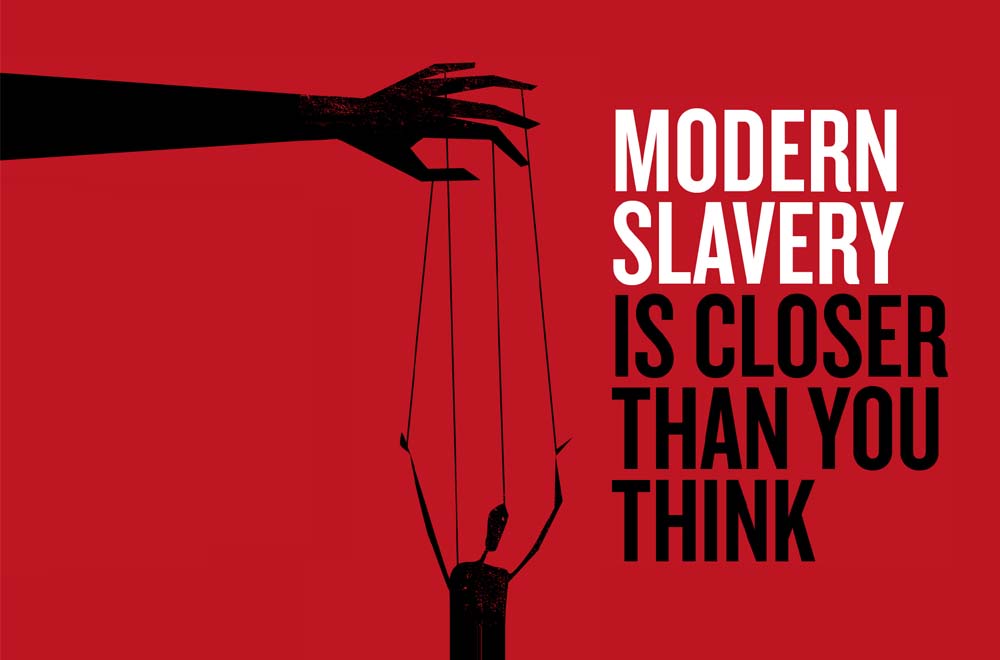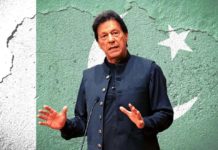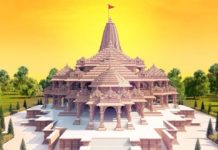Disclaimer: The Eqbal Ahmad Centre for Public Education (EACPE) encourages critical and independent thinking and believes in a free expression of one’s opinion. However, the views expressed in contributed articles are solely those of their respective authors and do not necessarily reflect the position or policy of the EACPE.
It is widely believed that slavery has been long abolished and buried. How can an institution so inhuman and barbaric be allowed to co-exist with the exalted institutions of present day democracy? It’s a comforting thought till we delve a little deeper into the grimy underbelly of a massive socio-economic machinery which feeds and thrives on hopeless subservience of millions of faceless men and women. The popular concept that slaves are restrained by metal chains is naive indeed. Modern slavery or neo slavery is all around us, but most of us prefer to look the other way, because most of us are guilty of being direct or indirect beneficiaries from a system that legitimizes it. The hidden slaves sweating for our luxury and comfort are bound by unseen chains of poverty, ignorance, gender-bias, manipulation and exploitation. Slavery has moved into the many shades of grey. There are no designated slave markets and people no longer need to be sold or bought in open auctions. But slaves they remain.
An analytic perception of slavery throws up a class of voiceless people who continue to be victims of different shades and extent of slavery.
The bonded labour tradition in undivided India found its genesis in the centuries old social hierarchy and caste system. Landed zamindars, money lenders and people from the self styled higher castes exploited the lower social-rung people by giving them nominal wages for labour which was barely enough to keep body and soul together. It trapped them in a deep rut of self perpetuating debt, reducing them to the status of chattel or bandhwa mazdoor. In 1976, India patted itself on the back for promulgating an Act to abolish bonded labour. But did it really succeed in bring around the promised equality, freedom and fraternity to all?
An analytic perception of slavery throws up a class of voiceless people who continue to be victims of different shades and extent of slavery. Historically, slavery has meant a loss of free will and choice, backed up by punitive control exercised by the slaveholder, or by elements of the state. So what is different about neo-slavery? Slave holders now support a civilized persona and do not wield a whip. The instruments of control include the power centres of the modern world -the state, capitalist systems and socio-political institutions. People are driven and controlled through monetary, bio-technological and psychological tools to be used as cogs in giant machinery which offers them few stakes beyond a minimum subsistence. They do not even fully comprehend the sources of control.
What kind of freedom do the marginalized populations of South Asian nations enjoy? Workers at the bottom of the economic ladder have few options to begin with, but at some point even those options are snatched away from them. During the present lockdown, the Indian migrant workers could not exercise their choice to go home. Forced to migrate hundreds and thousands of miles from their homes in search of a subsistence level income, they found themselves on the road overnight. Victims to hunger, exhaustion and police brutality, twenty six of them opted to end their lives on the railway tracks. Slaving for a living miles away from their villages and families, they are still unable to afford a roof over their head or savings to see them through such eventualities.
Subalterns of society continue to be slaves through poverty, lack of education and awareness. Such legal rights that they are unaware of or do not comprehend due to lack of education are futile. Lack of quality education robs the worker class of a voice. It is a huge challenge for uneducated people to keep pace with a highly technical and fast changing world, let alone exercise choices to better their existence. Deprivation, ignorance, poor health, insecurity and fear are invisible chains that keep people tethered to the daily grind of struggling to procure the next meal. Where is the time to think beyond it?
Gender disparities and exploitation of women in highly patriarchal societies is another form of camouflaged slavery.
Gender disparities and exploitation of women in highly patriarchal societies is another form of camouflaged slavery. A large number of women are forced into underage marriages or trapped in abusive and unhappy marriages. A very small percentage of girls get to choose their own life partners. Many who dare to do so become victims of so-called honour killings. In India, NCRB reported 251 honour killings in 2015, which is considered to be an under-reported number by activists. Once married, many women are held captive in oppressive marriages through social pressure, financial dependence, threats and lack of confidence. Most of the women have already been initiated into mental slavery through child rearing practices which demand obedience, tolerance and submission. Many girls grow up with low self esteem and unequipped to take life decisions. Those who may want to take a decision in breaking away, find no adequate social security or government support to do so. A large number spend a lifetime working as household chattel and tolerating physical and verbal abuse.
Human trafficking in India is a huge, ugly, undercover business which is seldom addressed seriously. There are no reliable numbers available for trafficked people, but an approximation by reports of NGOs peg the number at 65 million. Traffickers often lure young villagers and children with the promise of work in cities. According to the latest data from the National Crime Record Bureau, 63,407 children went missing in 2016, which translates into an average of 174 every day. They are further sold into brothels, married to much older men, forced into bonded labour in mining or agricultural sectors or used as unpaid household maids.
Transgender communities are another group of people trapped and exploited for centuries for being born into bodies which do not fit the deemed normal. For a long time, no one even bothered to carry out a census for these persona non grata. Now the estimated number of transgenders in the country is 4.9 lakh, which is many times lesser than the actual number according to their community. Social ostracization, abandonment by families and state neglect pushes them into a humiliating life of prostitution, street dancing or manual labour. Unable to break out of this marginalized community, only 19% of them are into salaried jobs.
B.R Ambedkar said about the Preamble to the Constitution of India:
Liberty, equality and fraternity are principles of life which cannot be divorced from each other. Liberty cannot be divorced from equality; equality cannot be divorced from liberty. Nor can liberty and equality be divorced from fraternity. Without equality, liberty would produce the supremacy of the few over the many.
The promise made to every Indian citizen in the Constitution must be honoured. No one was born a slave. No one was born to enslave another. The new world system should have no place for hidden slavery.
“Where the mind is without fear and the head is held high,
Into that heaven of freedom, my Father, let my country awake.”
(Rabindranath Tagore)
Source:
About the Author
 Dr Ranjit Powar is a psychologist who has served with the Punjab Civil Services and earlier as a lecturer with the Punjabi University, Patiala. Besides writing as a freelancer, she works with NGOs for imparting employability training to high school students.
Dr Ranjit Powar is a psychologist who has served with the Punjab Civil Services and earlier as a lecturer with the Punjabi University, Patiala. Besides writing as a freelancer, she works with NGOs for imparting employability training to high school students.








